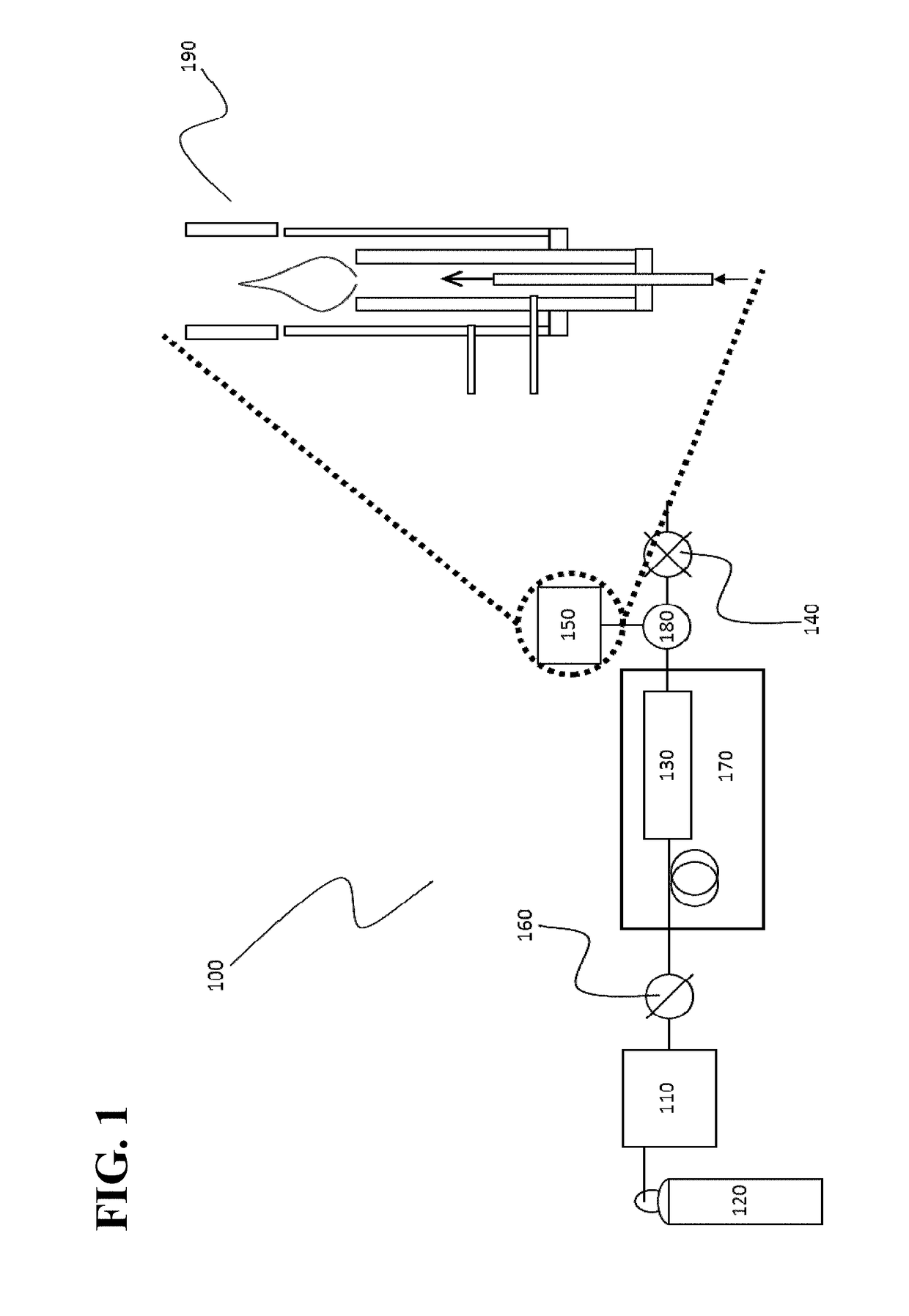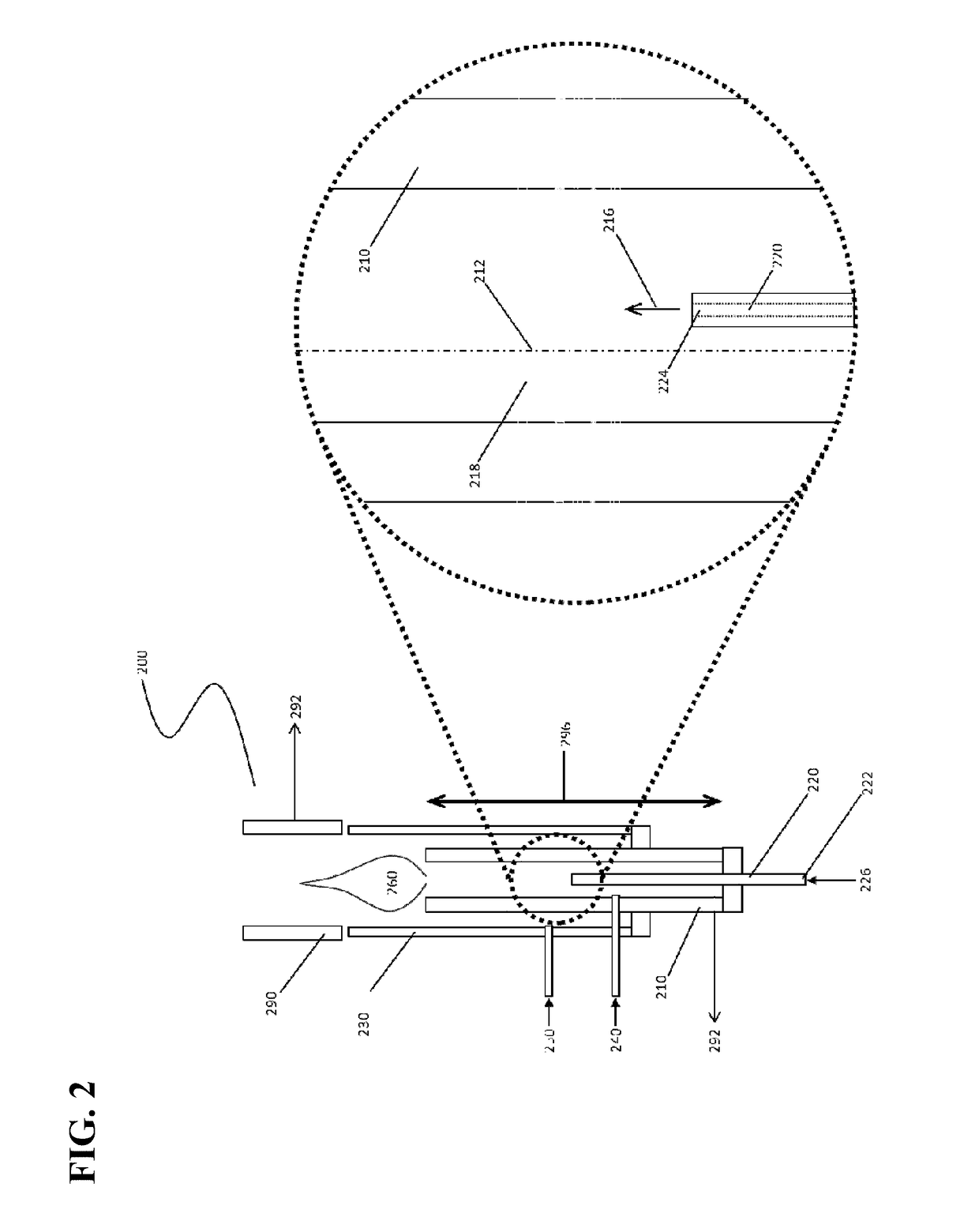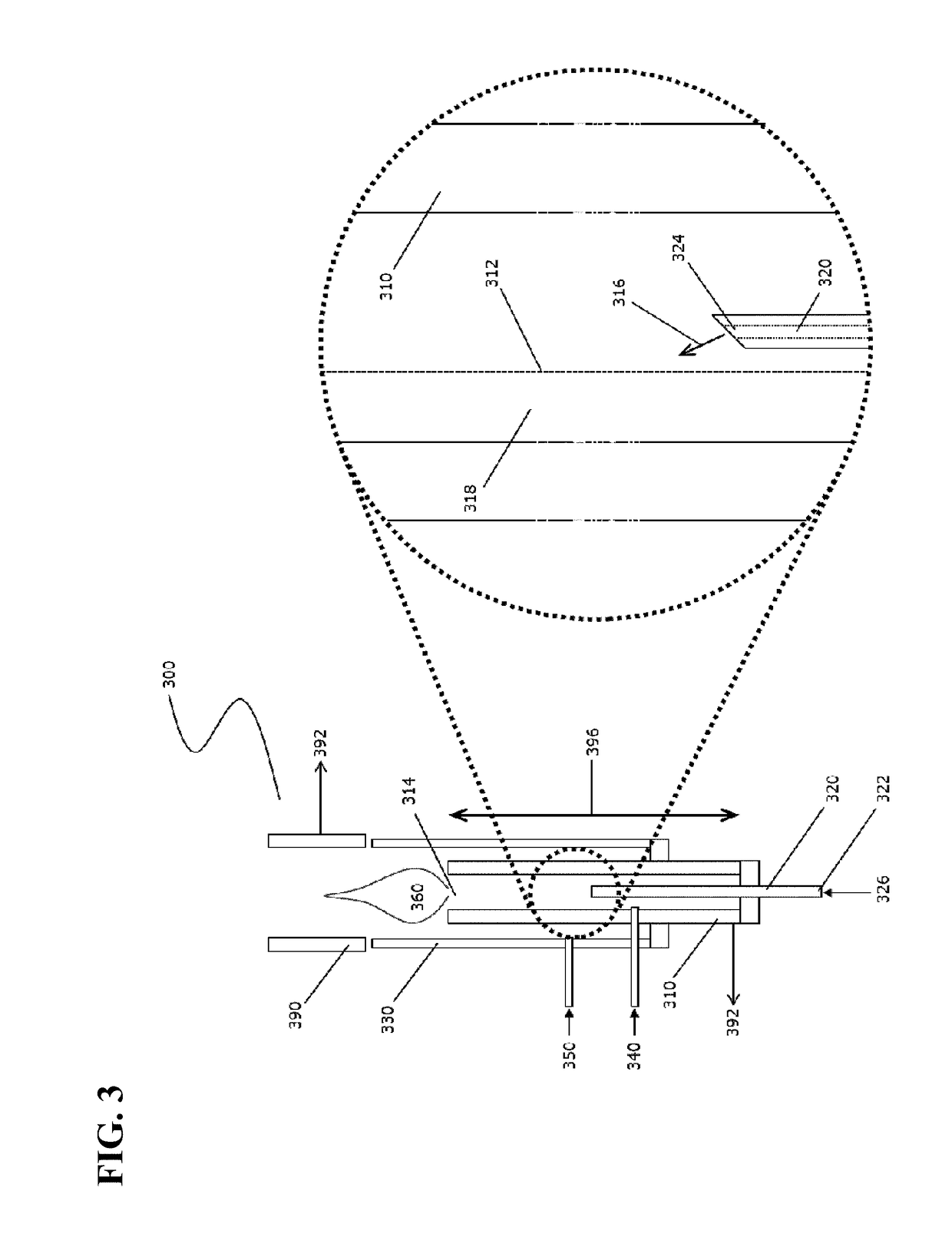Flame ionization detection burner assemblies for use in compressible fluid-based chromatography systems
a technology of compressible fluid and burner, which is applied in the direction of instruments, combustion types, separation processes, etc., can solve the problems of reducing so as to improve the efficiency of chromatography and optimize the analyte response. , to achieve the effect of maintaining the stability of the flame during operation, and optimizing the analyte respons
- Summary
- Abstract
- Description
- Claims
- Application Information
AI Technical Summary
Benefits of technology
Problems solved by technology
Method used
Image
Examples
examples
[0063]The analytical chromatographic system used was a carbon-dioxide based system (UPC2® System) commercially available from Waters Technologies Corporation, Milford, Mass., USA. The system included an autosampler, a column oven, a 3.0×100 mm ACQUITY UPC2 1.8 μm HSS C18 SB chromatographic column commercially available from Waters Technologies Corporation, Milford, Mass., USA, and an automated back pressure regulator. The mobile phase was 100% carbon dioxide supplied to the system via a fluid delivery module and was maintained at a pressure of 138 bar. The column was heated to a temperature of 45° C. The flow rate was 1.5 mL / min. The sample injection volume was 0.5 μL. At the outlet of the column, and upstream of the backpressure regulator, a “T” fitting directed a portion of the mobile phase flow to the BPR and a portion of the mobile phase flow to a FID (SRI Model 110 FID commercially available from SRI Instruments, Torrance, Calif., USA). The output signal of the FID was analyzed...
PUM
| Property | Measurement | Unit |
|---|---|---|
| angle | aaaaa | aaaaa |
| flow rate | aaaaa | aaaaa |
| flow rates | aaaaa | aaaaa |
Abstract
Description
Claims
Application Information
 Login to View More
Login to View More - R&D
- Intellectual Property
- Life Sciences
- Materials
- Tech Scout
- Unparalleled Data Quality
- Higher Quality Content
- 60% Fewer Hallucinations
Browse by: Latest US Patents, China's latest patents, Technical Efficacy Thesaurus, Application Domain, Technology Topic, Popular Technical Reports.
© 2025 PatSnap. All rights reserved.Legal|Privacy policy|Modern Slavery Act Transparency Statement|Sitemap|About US| Contact US: help@patsnap.com



